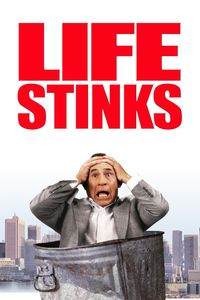(On TV, April 2020) The story of how a beautiful movie star invented Wi-Fi is now well-known enough to be part legend and part truth. While Bombshell: The Hedy Lamarr Story helps detail much of what happened, it does err a bit too much on putting the modern foundations of western civilization on Lamarr’s shoulders. Much of the film is about Lamarr becoming a movie star—her early career in Europe, immigration to the United States, success as an actress, and the legendary beauty that opened up many doors, whether they were professional or romantic. Since Bombshell is a hagiography, it doesn’t really mention how Lamarr’s films have not endured—Like Brigitte Bardot, she’s a movie star whose individual films aren’t that good, and unlike Bardot, she doesn’t have a signature film that people can point to and say, “This is what Lamarr was about.” Still, Lamarr was reasonably popular during World War II and if her life had been limited to her filmography, she still would have been an interesting topic for a film. But there’s more, obviously—thanks to contacts in the arms-dealing world (via her then-husband) and a musician friend, she co-patented a technique to hop between frequencies. This concept eventually became a building block for a host of later radio technologies, including the modern Wi-Fi protocol. Since Bombshell is all about Lamarr, it does draw a very thick, short and exaggerated line from Lamarr’s idea to modern-day Wi-Fi routers, ignoring the smorgasbord nature of technological development. The beauty-with-the-brain story is too hard to resist, though, and so is the tragically-victimized-woman narrative. In the third act of the film, we go over Lamarr’s less-than-impressive decline over the next five decades—how she married six times, wasn’t able to successfully transition away from the bombshell movie persona and how she eked a meagre living in difficult circumstances. The film definitely soft-pedals Lamarr’s increasing litigiousness and crankiness in later years, as well as her penchant for petty crimes such as shoplifting—although, amusingly, one of the targets of her lawsuits, Mel Brooks, ends up delivering one of her strongest defences when interviewed for the film. Still, Bombshell is equally dedicated to making a saint out of its oppressed heroine, blaming society-at-large for her use of drugs, her poverty, and her increasing obscurity until she and her achievements were essentially rediscovered during the 1990s. (Makes sense: I first heard about Lamarr in 1996 when her portrait won a CorelDraw contest—something that led to another lawsuit.) At the very least, Bombshell lays out the three main poles of interest in Lamarr’s life in compelling fashion, with several interviewees, including Peter Bogdanovich, Jeanine Basinger, Robert Osborne, her children and Lamarr herself in archival footage. It’s informative, compelling, emotional, somewhat authentic and filled with good archival footage. It’s, in other words, most of what you need to know about her. Where I’ll diverge from the usual good words, however, is in regretting that writer-director Alexandra Dean took the easy hagiographic way to cover the material, going for the cheap yet unarguable “genius woman underestimated because of her good looks” tragedy angle when there’s a lot of material unsaid or unexplored that would make this a more complex tale. But no—Lamarr is at the centre of the universe in Bombshell, so much so that it’s a wonder she’s not portrayed installing home routers.






